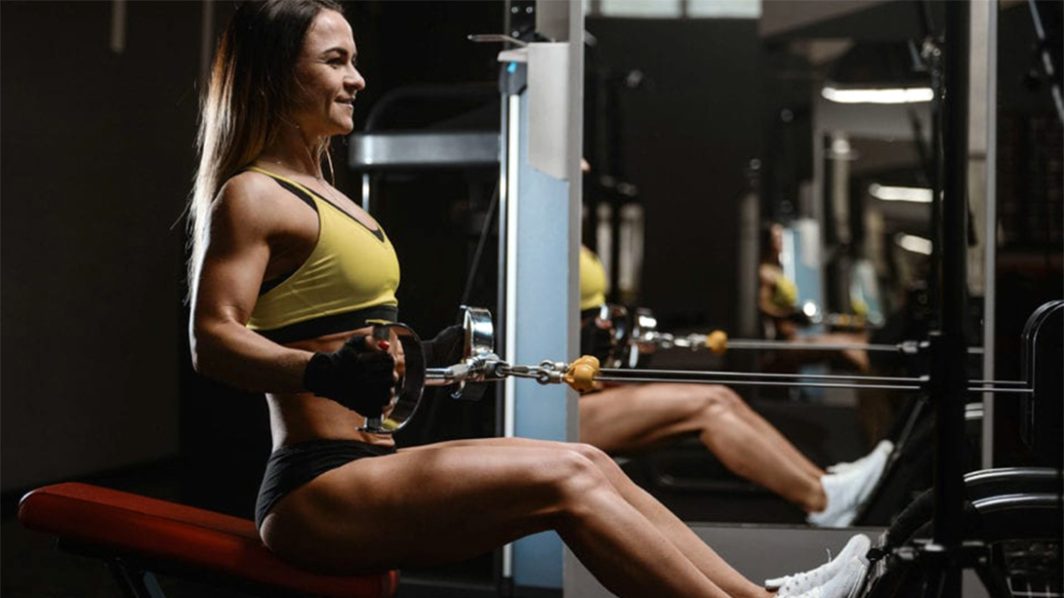
We all know that well-balanced diets include the different nutrients we need to maintain health and well-being. But did you know that your exercise program needs to be well-balanced, too? There’s three types of exercise to include in your work-out diet.
Aerobic Exercise:
Aerobic exercise burns energy and oxygen, through continuous movement of the largest muscles in your body (your thigh muscles). Aerobic activities include bicycling, swimming, jogging, and (a great one for beginners or those who are recovering from illness) walking. If you’re just starting, try 10 minutes a day four days and increase as it feels comfortable until you’re exercising 30 to 60 minutes. Some people find that adding variety to their program (a new route every day; alternating classes and stationary biking) keeps them motivated.
Finding the right pace for aerobic exercise is important. Rambling at too comfortable a pace may not maximize the benefits of aerobic exercising, but overdoing can make exercise “anaerobic” (non-oxygen burning). A good way to make sure you’re exercising aerobically is to measure your heart rate. After exercising, put your fingers (not your thumb!) across your wrist (palm up). Count the number of pulses you feel during 10 seconds, then multiply that by six to convert it to a one-minute heart rate. Keep your exercise heart rate to 55 percent to 80 percent of your estimated maximum heart rate (220 – your age)
If that’s too much math, you can estimate using the sing/talk test. While you’re exercising, carry on a conversation with your gym-buddy or (if you’re exercising at home) sing a song (“Yankee Doodle” works well). If you feel just as you would if not exercising, pick up the pace a tad. If you’re out of breath and having to puff after each word, you’re no longer in the aerobic range – cut back a bit to get the full exercise benefit.
Strength Conditioning or Weight-Training:
Strength conditioning can include callisthenics, lifting free-weights, and machine-assisted lifting. Strength condition helps build muscles that can stabilize joints and may help prevent bone loss as you get older.
Strength conditioning seems to help weight loss. Conditioned muscle burns more calories even between aerobic exercise sessions. training seems to assist with retaining if you’re And if you’re on a reduced calorie (weight reduction) diet, weight training may help you lose more fat and less lean muscle.
Some women are nervous about weight bearing exercise because they are afraid of getting “too bulky” or looking “too masculine.” Not to worry: men make testosterone in large amounts, which may contribute to that sort of muscular development; women generally don’t respond to strength training the same way and are more likely to lose inches as they work out.
Stretching Is Very Important:
Stretching helps retain joint and tendon flexibility while you exercise. In addition, stretching may be an important part of recovery from a previous injury; your healthcare provider may recommend special stretches to part of recovery from an injury or stroke.
How To Stretch Safely:
Keep in mind that overstretching can increase your risks of being hurt during exercise. Here are some tips to help ensure that you are getting the maximum benefit out of stretching before or after exercise:
* Start gently. When you’re first starting out, you may not be able to stretch your joints very far. Don’t push it or you may end up damaging your tendons, ligaments or muscles
* Stay gentle. The American College of Sports Medicine notes that the “no pain, no gain” method of stretching may destabilize your joints. Try a gentle stretch of the muscles you use for 10 to 30 seconds. If it hurts, there’s a reason.
* Match stretches to exercise. If you’re an avid dancer, make sure that your legs and ankles have been gently stretched; if you lift weights, stretch your arms and legs.
*Accommodate your history. If you’ve had a previous injury, make sure that your stretches accommodate rather than exacerbate it. Your doctor or a sports medicine practitioner can help you to finding the right stretches and will often have handouts showing you how to perform them.
Remember, before starting any exercise program, you should consult with your health care practitioner to tailor it to your needs, particularly if you are 40, have existing health issues or a prior significant injury, or have suffered in the past from heart disease or stroke.
“Three things every exercise program should have,” American Council on Exercise 2001
Amisola, R.V. “Physical activity, exercise, and sedentary activity: relationship to the causes and treatment of obesity.” Adolescent Medicine Volume 14, issue 1, pages 23-35 2003.
Cussler, E.C., ” Weight lifted in strength training predicts bone change in postmenopausal women.” Medicine and Science of Sports and Exercise , Volume 35, issue 1, 2003
Garry, J., “Physical Activity and Exercise at Menopause,” Clinics in Family Practice, Volume 4, issue 1, 2002
Hobson, K. “The stronger sex. Women who lift weights get healthier, better bodies–not, new research shows, bulkier ones.” US News World, Volume 132, issue 16, p 52-53
Ian Mason, owner of PhenForum.com, your source for weight loss support, fitness nutrition and exercise tips for your long term health.
Ian is a fat-to-fit student of health, weight loss, exercise, and several martial arts; maintaining several websites in an effort to help provide up-to-date and helpful information for other who share his interests in health of body and mind.




